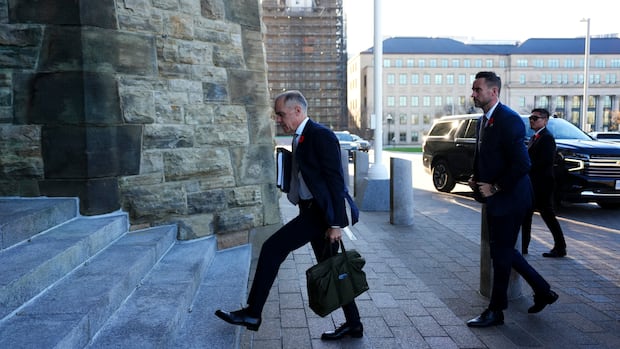Top Stories
Canada’s 2025 Budget Unveiled: $78B Deficit, Major Cuts Ahead

UPDATE: Canada faces a staggering $78 billion deficit as Prime Minister Mark Carney unveils the Liberal government’s first budget for 2025-26. The comprehensive 406-page document promises both significant spending cuts and ambitious investments aimed at revitalizing the economy amid trade uncertainties.
The budget forecasts the deficit will decrease to $65 billion in the following fiscal year, ultimately aiming for $57 billion by 2029-30. This figure notably surpasses the $42 billion deficit projected by the previous Liberal government, raising concerns among opposition parties.
In a bid to rein in spending, the government plans to implement $141 billion in new expenditures over the next five years while offsetting costs through substantial cuts. Key to this strategy is a comprehensive expenditure review expected to save $13 billion annually by 2028-29, culminating in a total of $60 billion in savings.
As part of its austerity measures, the government intends to reduce its public service workforce by approximately 40,000 positions, bringing total federal employees down to 330,000 by 2028-29. This downsizing aims to divert more taxpayer dollars toward critical infrastructure and innovation projects, rather than routine operational expenses.
In an effort to stimulate economic growth, the budget introduces a “productivity super-deduction” tax measure to enhance Canada’s investment environment, making it more attractive than that of the U.S.. Notable tax incentives include quicker write-offs for capital investments and new provisions for the liquefied natural gas (LNG) sector.
The budget also emphasizes a push for infrastructure development, allocating $214 million over five years to expedite major projects, including a high-speed railway connecting Toronto to Quebec City. The government aims to start construction in just four years, a significant acceleration from previous timelines.
In a controversial move, Carney’s budget proposes drastic cuts to immigration, slashing temporary resident admission targets from 673,650 in 2025 to just 385,000 in 2026. The plan aims to alleviate pressures on housing and healthcare systems, but it has raised eyebrows among advocates for immigrants.
The budget also includes a hefty increase in defense spending, earmarking $81.8 billion over five years, with a commitment to meet NATO’s target of 2% of GDP by March 31 and 5% by 2035. This funding will be directed toward recruitment, retention, and modernization of the Canadian Armed Forces.
In a bid to simplify the tax system, the government is eliminating the underused housing tax and the luxury tax on high-end aircraft and boats, a move that has been met with mixed reactions across the political spectrum.
As the budget unfolds, it raises critical questions about its potential impact on everyday Canadians and the economy at large. Citizens are urged to stay informed as this developing story evolves.
For ongoing updates and detailed analysis, follow our live coverage.
-

 World4 months ago
World4 months agoScientists Unearth Ancient Antarctic Ice to Unlock Climate Secrets
-

 Entertainment4 months ago
Entertainment4 months agoTrump and McCormick to Announce $70 Billion Energy Investments
-

 Lifestyle4 months ago
Lifestyle4 months agoTransLink Launches Food Truck Program to Boost Revenue in Vancouver
-

 Science4 months ago
Science4 months agoFour Astronauts Return to Earth After International Space Station Mission
-

 Technology2 months ago
Technology2 months agoApple Notes Enhances Functionality with Markdown Support in macOS 26
-

 Top Stories3 weeks ago
Top Stories3 weeks agoUrgent Update: Fatal Crash on Highway 99 Claims Life of Pitt Meadows Man
-

 Sports4 months ago
Sports4 months agoSearch Underway for Missing Hunter Amid Hokkaido Bear Emergency
-

 Politics3 months ago
Politics3 months agoUkrainian Tennis Star Elina Svitolina Faces Death Threats Online
-

 Politics4 months ago
Politics4 months agoCarney Engages First Nations Leaders at Development Law Summit
-

 Technology4 months ago
Technology4 months agoFrosthaven Launches Early Access on July 31, 2025
-

 Top Stories2 weeks ago
Top Stories2 weeks agoFamily Remembers Beverley Rowbotham 25 Years After Murder
-

 Top Stories5 days ago
Top Stories5 days agoBlake Snell’s Frustration Ignites Toronto Blue Jays Fan Fury

















